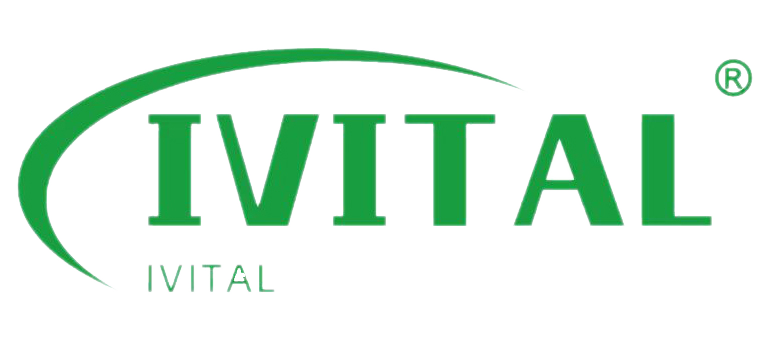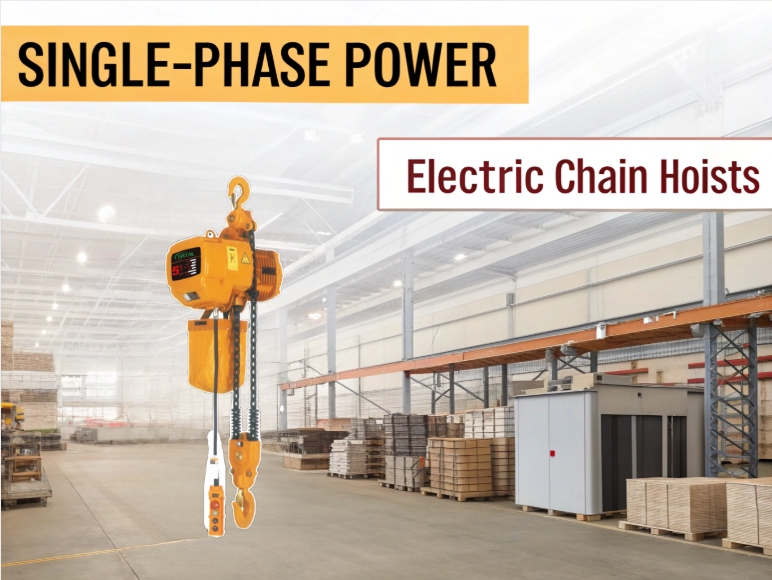Single-phase power looks simple and affordable, but is it really good enough for industrial chain hoists?
Single-phase power is suitable for light to medium-duty electric chain hoists, especially in small workshops or industrial setups with limited access to three-phase electricity.
I remember struggling with this exact question during a setup for a client’s workshop. Choosing the wrong power supply led to overheating and slow lifting speeds.
[Table of contents]
- What’s the difference between a single phase and a three phase hoist?
- Why choose a single phase electric chain hoist for a workshop?
- What are the limitations of single-phase hoists in industrial use?
- What are the common power specifications for single-phase electric hoists?
- Conclusion
What’s the difference between a single phase and a three phase hoist?
This is the first question most engineers and buyers ask.
Single-phase hoists are easy to install and cost less, while three-phase hoists offer better performance and load capacity.
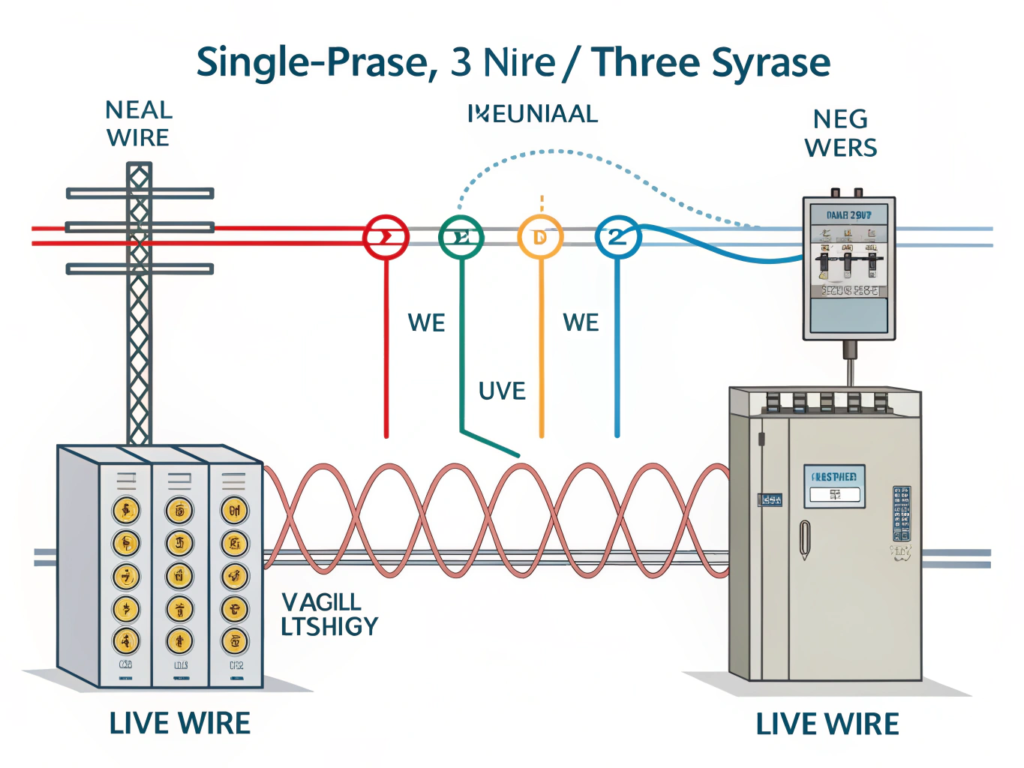
Dive Deeper
From an electrical perspective, single-phase systems use one live wire and one neutral, creating an inconsistent wave of power. In contrast, three-phase systems deliver a steady stream of energy across three wires, making them ideal for high-load operations.
| Feature | Single Phase | Three Phase |
|---|---|---|
| Setup Complexity | Simple | Requires Expertise |
| Efficiency | Low | High |
| Load Handling | Up to 2 tons | Over 2 tons |
| Cost | Lower upfront cost | Long-term savings |
I once worked with a client using a single-phase hoist for lifting 2-ton molds. It struggled constantly. Switching to a three-phase system reduced lifting time by half and eliminated overheating issues.
Why choose a single phase electric chain hoist for a workshop?
Many small workshops don’t have three-phase power. So, what’s the alternative?
Single-phase hoists are budget-friendly and perfect for workshops where lifting is occasional and load weight is moderate.
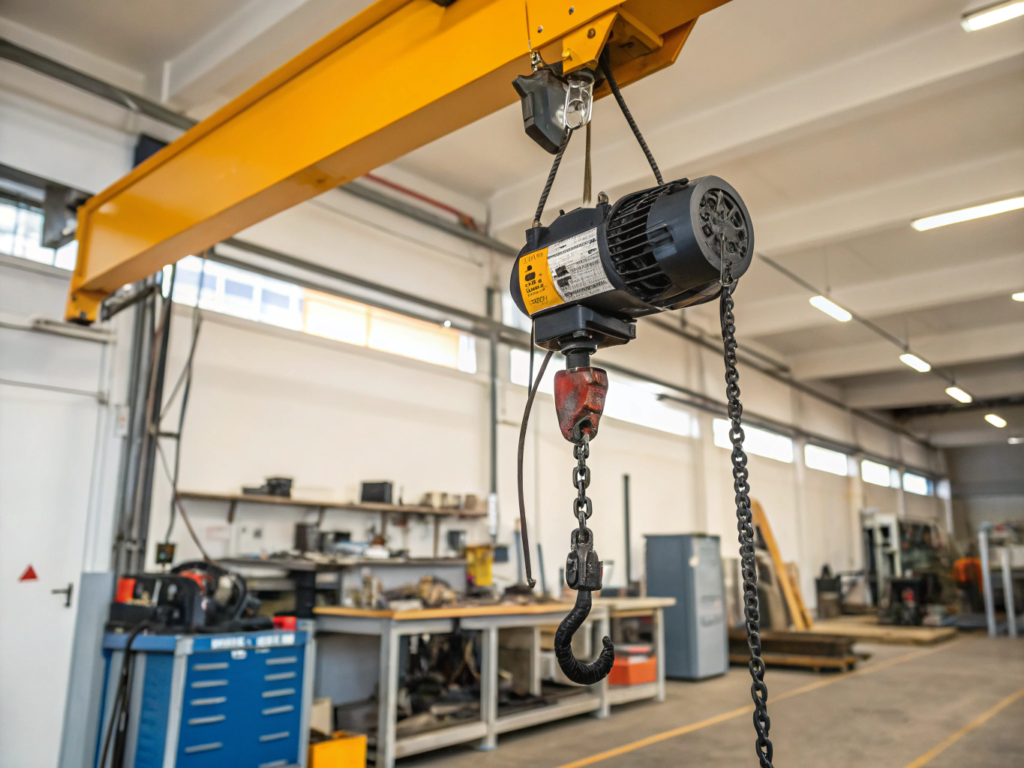
Dive Deeper
In smaller spaces like auto repair shops, fabrication corners, and light-duty assembly lines, single-phase electric hoists perform really well. Most of these facilities run on 230V or 110V and don’t lift more than a ton at a time.
I once helped an auto shop install a 1-ton single-phase hoist. They used it to lift car engines a few times a week. The hoist performed flawlessly and didn’t require a three-phase upgrade.
| Application Area | Typical Use Case |
|---|---|
| Auto workshops | Lifting engines |
| Light manufacturing | Moving metal sheets |
| DIY/maker spaces | Occasional lifting |
What are the limitations of single-phase hoists in industrial use?
Of course, single-phase systems come with downsides.
They can’t support continuous or heavy-duty lifting and may struggle with overheating under long operation.
Dive Deeper
Here’s where single-phase hoists start to fall short:
- They overheat with frequent use
- Start-up torque is lower
- Load capacity is usually capped at 1–2 tons
- Fewer industrial-grade models are available
In one of my projects, we tried to use a single-phase hoist in a busy warehouse where packages were lifted every few minutes. Within a week, the unit tripped breakers repeatedly and motor temperatures rose dangerously high.
If you’re running high-frequency operations or dealing with unpredictable heavy loads, three-phase is not just better—it’s safer.
What are the common power specifications for single-phase electric hoists?
Let’s talk numbers for a second.
Single-phase hoists commonly use either 110V or 230V depending on regional power standards.
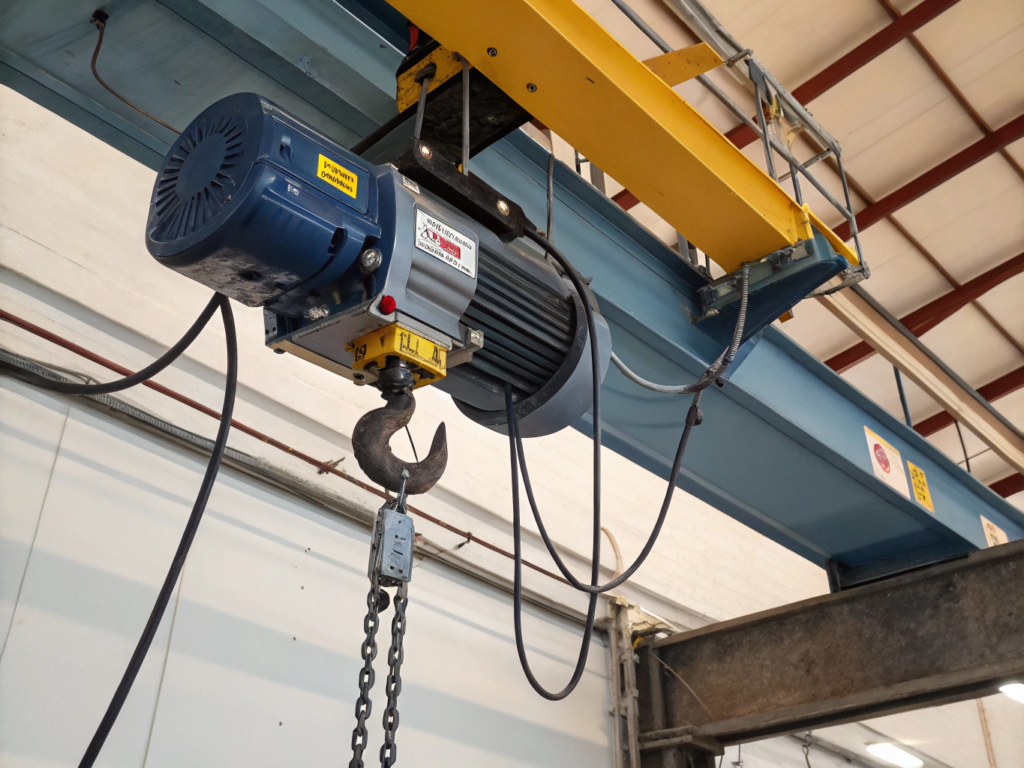
Dive Deeper
Here’s how voltage matters:
- 110V is standard in North America and Japan. It’s suitable for light-duty tools and hoists under 1 ton.
- 230V is common in Europe, China, and most industrial regions. It supports stronger performance and slightly heavier loads.
| Voltage | Region | Typical Use |
|---|---|---|
| 110V | USA, Japan | Light loads, low duty |
| 230V | EU, Asia, Africa | Medium loads, moderate duty |
When I worked with a workshop in Sydney, switching from a 110V hoist to a 230V unit improved lifting speed by almost 30%—just by changing the voltage!
Conclusion
Single-phase hoists are reliable for light-duty lifting where three-phase power isn’t available.
